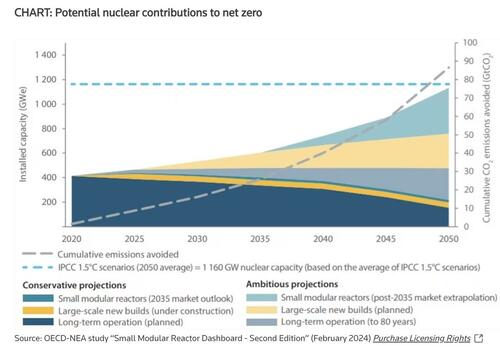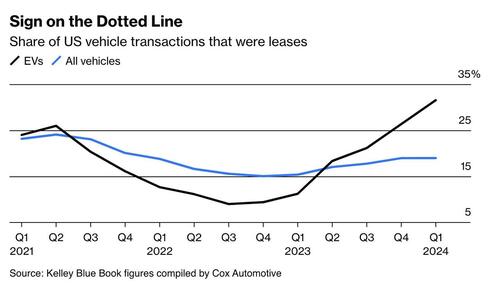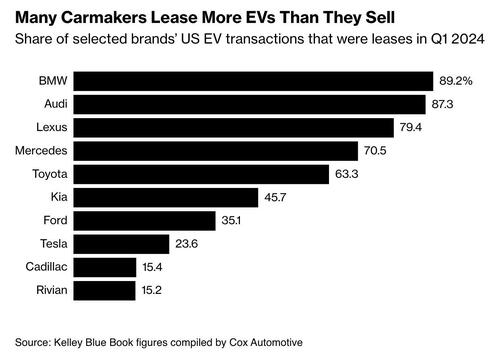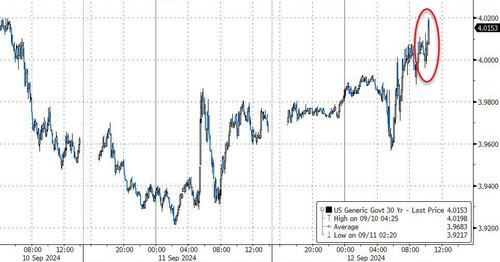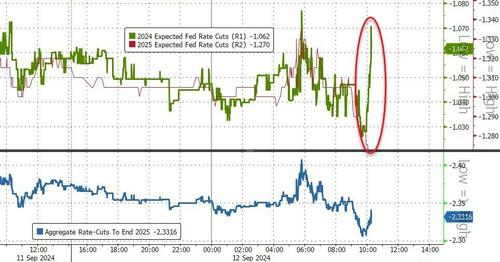Why Whole Foods Bags Have Shrunk
Authored by Jeffrey A. Tucker via The Epoch Times (emphasis ours),
Every event organizer with experience knows that venue size really matters. If you have 30 people meeting in a room with no extra chairs, it feels like a crowd. If you have 5,000 people meet in a venue designed for 50,000, it is a failure and flop. That latter scenario I actually witnessed, at an event at which I was tagged to speak, and it was depressing and sad, really a disaster.
It could have been otherwise if the organizers had correctly estimated the demand. Instead I rolled up to a huge but largely empty parking lot, and rattled around an exhibitor space with plenty to exhibit but hardly anyone seemed to be there. There were in fact thousands in attendance but once the feeling of event failure seized the place, people could not wait for it to end.
From that experience, I learned: always underestimate the number of people you expect. It’s not easy because every event organizer is excited for what he is doing. There is a tendency to believe that everyone else shares your enthusiasm. It’s the same with homeowners who put their houses on the market at far too high a price, or authors who imagine that their book will become a bestseller.
The subtle psychology of full and empty, high and low, profoundly affects economics too.
The size of the Whole Food bag within the last several weeks has shrunk by a third or so, and gone up in quality.
The reason will be clear to anyone with experience in marketing. If you have spent $150 and walk out with a bag only halfway full, you feel ripped off, and sense that you have not received your money’s worth. But if you shrink the bag and the customer walks out with a full sack of stuff for the same amount of money, some of the edge seems to disappear.
It’s a different form of shrinkflation, to be sure, but it makes sense from the point of view of the seller. Let’s please be clear: these end-point grocery sellers have costs too. They have gone up just as much as the final retail price. They still have to maintain their slim margins, and simply cannot sell at a loss for everything.
Yes, you can draw people in with some products that sell below cost. I suspect that Whole Foods does this with flowers, for example. Again, it makes sense. Offer the best and lowest-priced flowers in town and people will rock up just to buy them but remember that there are other goods they need. The store hopes to make up the difference in unplanned purchases. If it doesn’t work, it stops.
Pricing is hard and requires a complex mix of accounting and soothsaying concerning customer psychology. The store of course wants to extract a higher price, a drive that is matched on the other side by the customer’s desire to buy everything for free. The key to the price is finding the negotiated compromise.
When I was out buying my first car, and having already read a bit on economics, the salesman asked me “What do you want to spend on a car?” My answer came easily: “I want to spend exactly zero. In fact, I want you to pay me.” He was truly startled but it set the negotiating terms on a good and honest starting point. I did end up buying.
This is the market at work and it is meaningful and often magical the way it works without a central plan. This becomes a serious challenge in inflationary times when the quantity of money is rising and reducing the value of each unit. Inflationary forces flow unpredictably from sector to sector, good to good, service to service. It produces grave difficulties for both buyers and sellers. Everyone wants to leave a transaction with the perception that he is better off. A changing value of money adds another layer of challenge.
And yet, these days, we are hearing all about how corporate greed is responsible for inflation. Terrible people at the sales’ end points are somehow “gouging” the customer. To be sure, every grocery store would love to do this, but they simply cannot. This is because of the wonderful reality of competition. The customer can always go somewhere else or decline to buy altogether.
The Harris/Walz campaign promises to implement national rules against gouging customers. What are the standards they will use to judge? We do not know but the only safe way to avoid being charged would be never to raise the price, regardless of input costs. It would only take a matter of days before such a rule would turn to losses and then shortages and then bankruptcies and closings. Next will come mandates to sell, and then government takeovers of groceries, which would inevitably be followed with rationing.
Rationing groceries is not an unheard of practice in U.S. history. Nearly all grocery staples were rationed during the Second World War. Every household was issued tickets for sugar, meat, butter, cheese, milk, eggs, coffee, all animal fats (thus the invention of vegetable fat), canned goods, chocolates, aluminum foil, and clothing and footwear. People were annoyed but it was explained that this was necessary for the war effort.
How much easier would rationing be in our time? The tickets could be dropped into our bank accounts and deployed using smartphones with identification and QR codes. The federal government could easily build out an application for download, and even issue cards. It could be built off the existing SNAP program and the EBT card that replaced food stamps. This would not be a technical challenge.
Five years ago, this might have sounded like a far-flung prospect. These days, it is a highly realistic probability with national anti-gouging laws. It could easily be promoted as a scheme to end corporate greed. Tragically, the stores themselves would not be as against this as one might suppose. It would put an end to the investigations and paperwork associated with anti-gouging compliance, and the program could be sweetened with trillions in subsidies for the stores themselves.
Such dystopian scenarios are no longer crazy. Remember that only four years ago, we were all locked out of churches and other houses of worship on major religious holidays, and the schools for which people pay in taxes were shut sometimes for a year or even two. This was a test run of compliance and central planning. As terrible as it is to say, some of our leaders believe that this system is better than a market-based economy.
Plus, this time they have a great excuse: save the environment. Every school kid for decades has been taught about reducing resource use and told to valorize all recycling. It seems perhaps like nothing is wrong with that but consider the lesson here: our use of resources is paristical on nature and a clean environment. If that is always true, where is the end point? Perhaps austerity through bread lines is the way to go.
It does not inspire confidence in our leaders that they cannot give an accurate account of what causes grocery prices to go up, and think nothing of blaming the retailers who are themselves victims of declining purchasing power. Is it because they know no economics? Or is it because they aspire to bring about a central plan gradually through the imposition of ever more rules and systems, with the belief that with digital tools, they can finally make socialism work?
I’ll take Whole Foods smaller bags, as regrettable as they are, over a central plan. At least we still have some choice. At least we still have flowers, food, and household items, and it is up to us whether and to what extent we consume them. Under a government plan, you will have no choice and no voice.
Views expressed in this article are opinions of the author and do not necessarily reflect the views of The Epoch Times or ZeroHedge.
Tyler Durden
Thu, 09/12/2024 – 15:40
via ZeroHedge News https://ift.tt/hFwRYNL Tyler Durden


